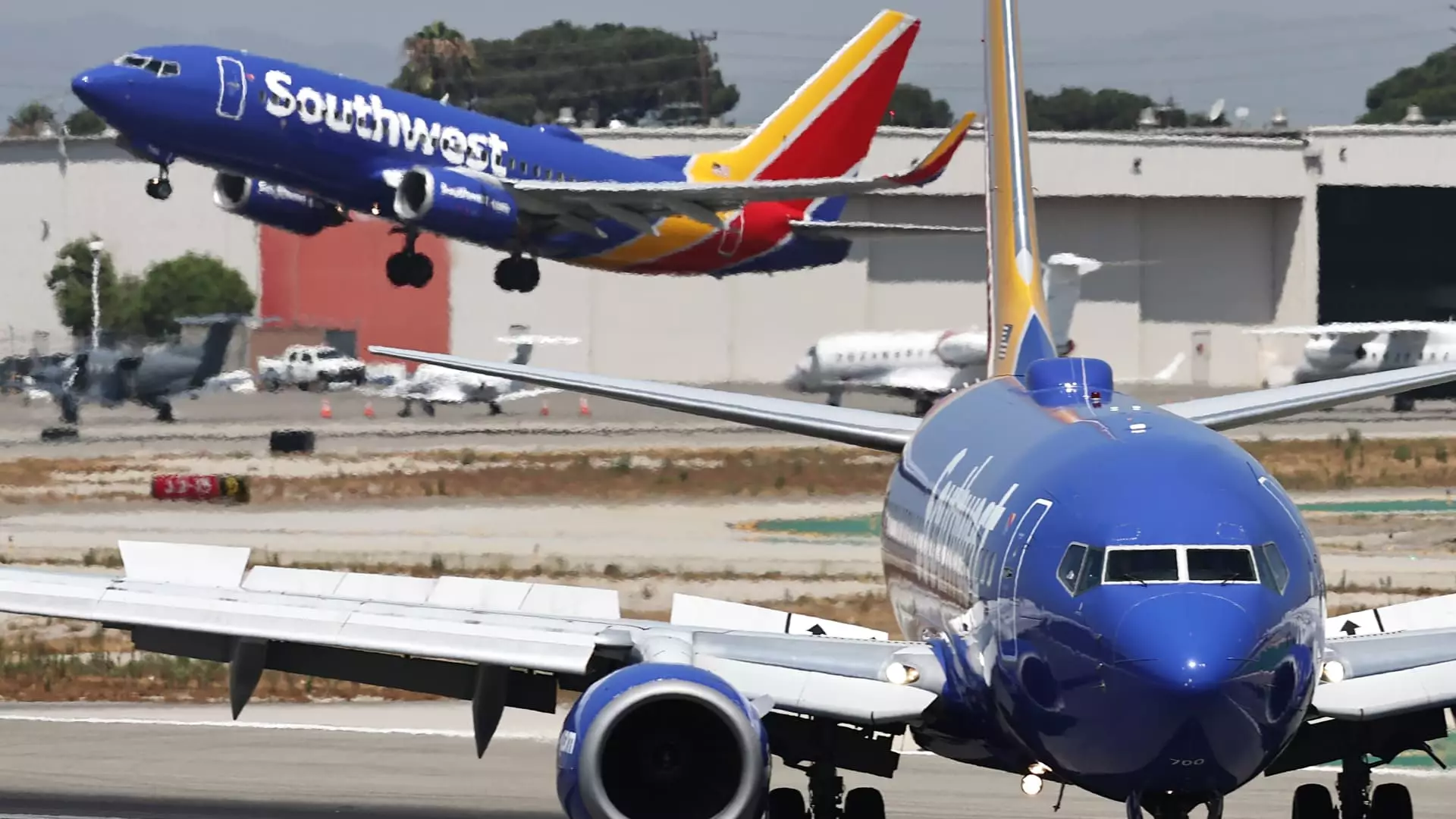In a bold maneuver aimed at appeasing investor concerns and revitalizing its growth trajectory, Southwest Airlines announced an uplifting forecast for its third-quarter revenues this past Thursday. The company has projected an increase in unit revenue by as much as 3% year-over-year, an encouraging update in contrast to its earlier predictions of a decline of approximately 2%. This positive reevaluation underscores Southwest’s commitment to rejuvenate its financial health amidst external pressures, particularly from activist investors such as Elliott Investment Management.
In a show of confidence in its future, Southwest has also authorized a significant $2.5 billion share buyback program. This financial strategy is designed to enhance shareholder value and could indicate that the airline anticipates solid cash flows in the coming quarters. Such moves are crucial as airlines navigate the unpredictable terrain of post-pandemic recovery and evolving consumer habits.
An interesting aspect of Southwest’s recent developments is its decision to bolster its board with the addition of Bob Fornaro, a highly regarded figure in the aviation industry. Fornaro, who previously led Spirit Airlines, has a long-standing connection with Southwest, having been closely involved since the merger with AirTran in 2011. His appointment is seen not merely as a nod to respectability, but rather as a tactical move to bring in fresh perspectives to the airline’s governance as it confronts mounting scrutiny and demands for change.
CEO Bob Jordan and other executives have battened down the hatches for a pivotal investor day presentation, where they will detail the airline’s strategic adjustments moving forward. In light of Elliott’s call for leadership overhaul, the pressure is on Jordan and his team to articulate a coherent vision that not only addresses current investor grievances but also sets a robust framework for future prosperity.
In another significant pivot, Southwest has kicked off sweeping changes to its historically established business model. The inclusion of assigned seating and options for extra-legroom accommodations marks a departure from its traditional practices, aimed at tapping into untapped revenue potential. This shift showcases the airline’s adaptability in meeting modern traveler expectations, while also strategically positioning itself against competitors.
Despite changes that may seem to deviate from its foundational policies, Southwest remains staunchly committed to its long-standing baggage policy, which allows passengers to check two bags free of charge. This decision further emphasizes the airline’s attempts to uphold customer loyalty and expand its market share despite potential short-term revenue losses from ancillary fees, reflecting a strategy to build long-term relationships with its customer base.
On the operational front, the airline has made some hard-hitting decisions, including significant service cuts in Atlanta, which will inevitably lead to the reduction of over 300 flight attendants and pilots. Such severe measures illustrate the balancing act that airlines must perform between cost management and maintaining a competitive service offering. Furthermore, with Gary Kelly, the former CEO, set to step down by the end of next year, the pressure is intensifying for Southwest to execute a seamless transition in leadership while simultaneously revamping its operational structure.
As the airline navigates these challenges, it becomes evident that the road ahead will require not just strategic adjustments but also a reimagining of how it engages with both employees and investors alike. The upcoming months will be crucial in determining whether Southwest Airlines can transform its ambitions into reality and solidify its status as a leading force in the aviation industry.


Leave a Reply